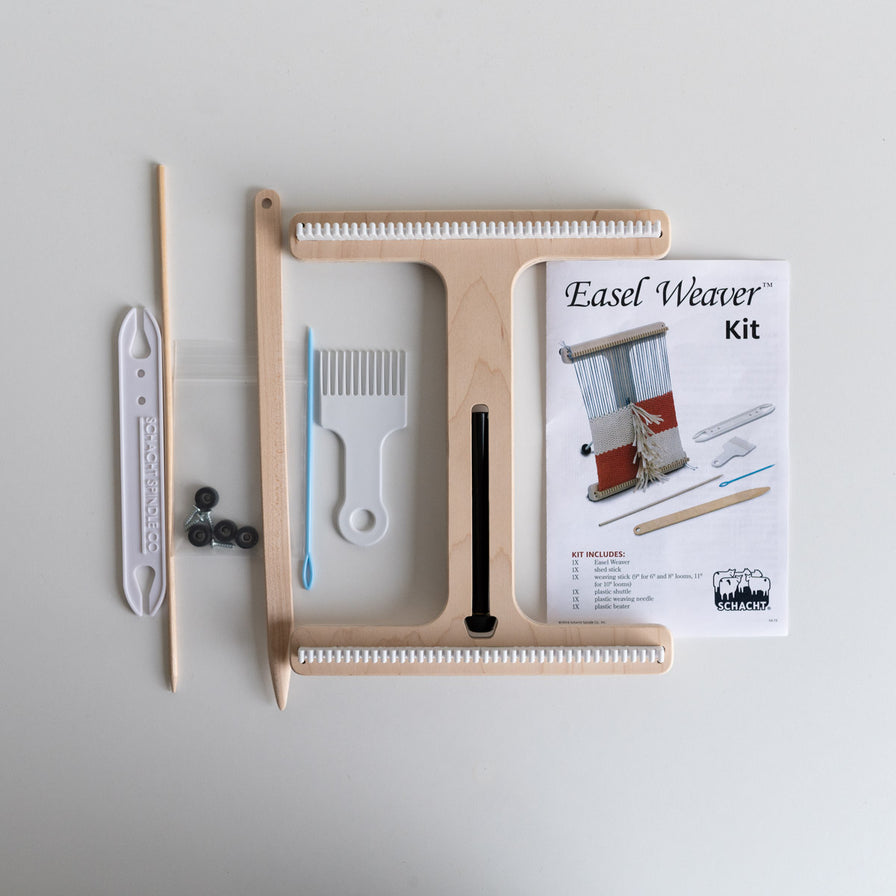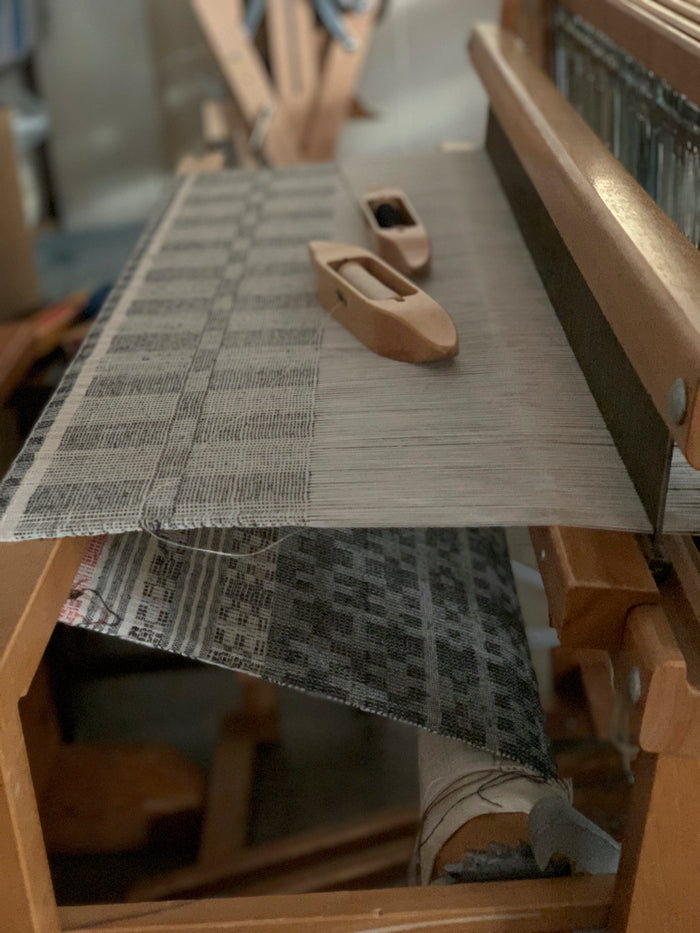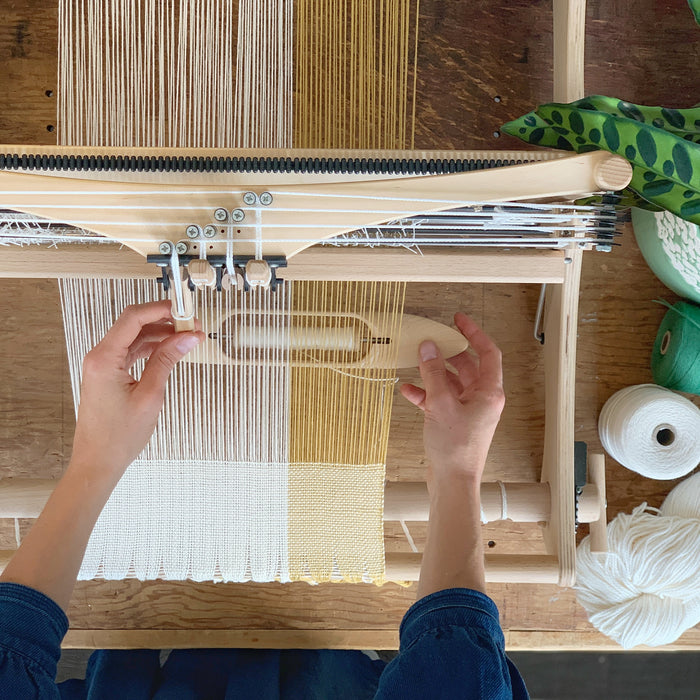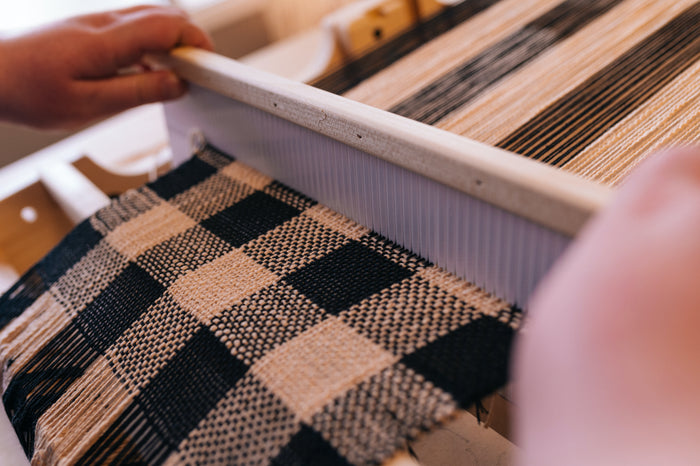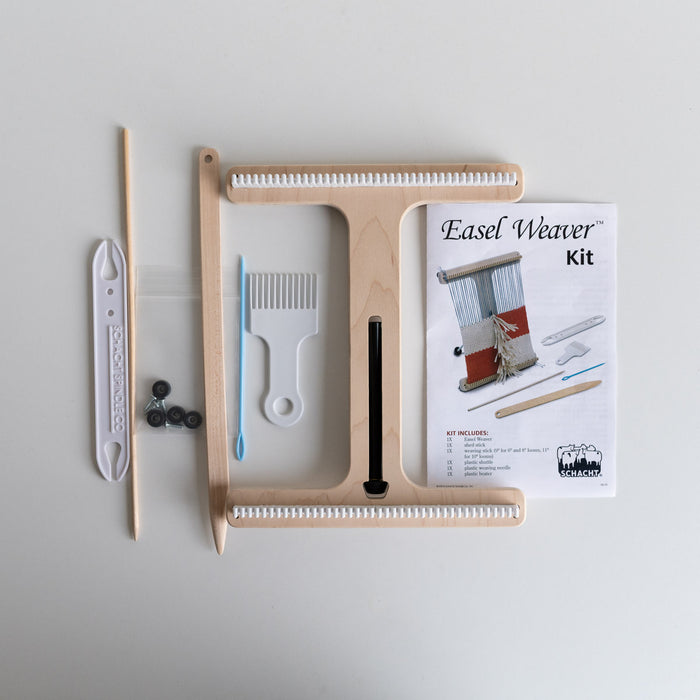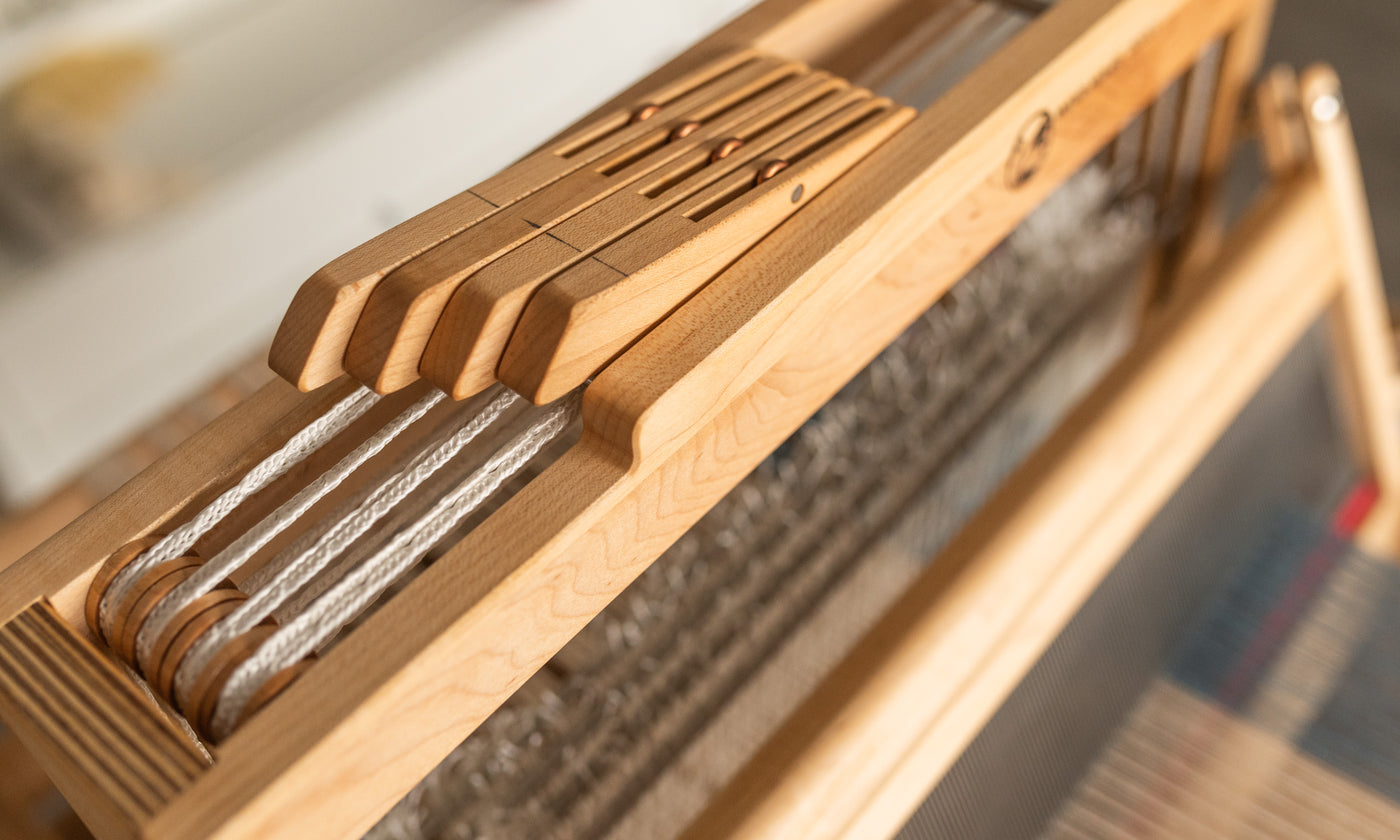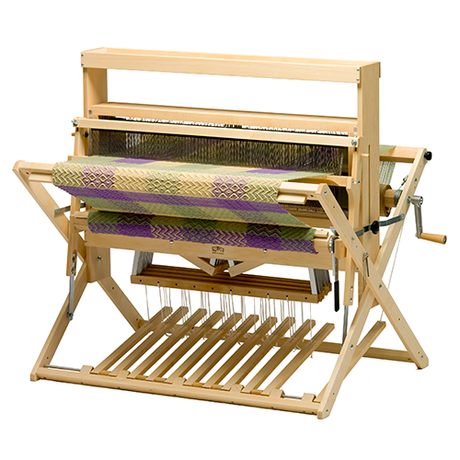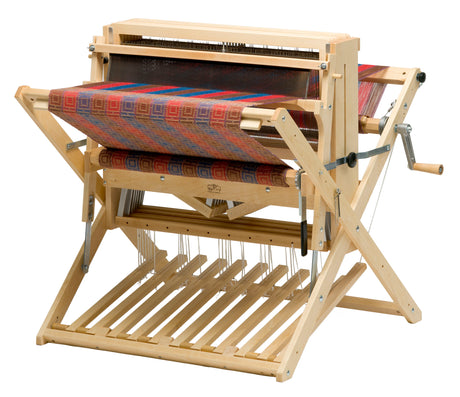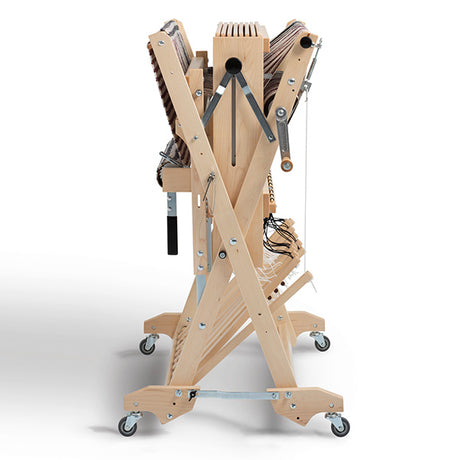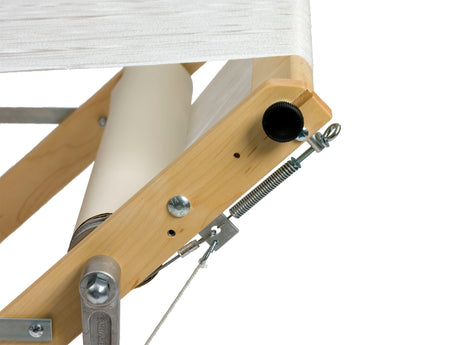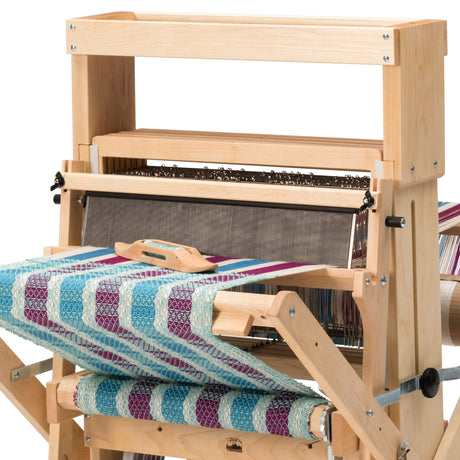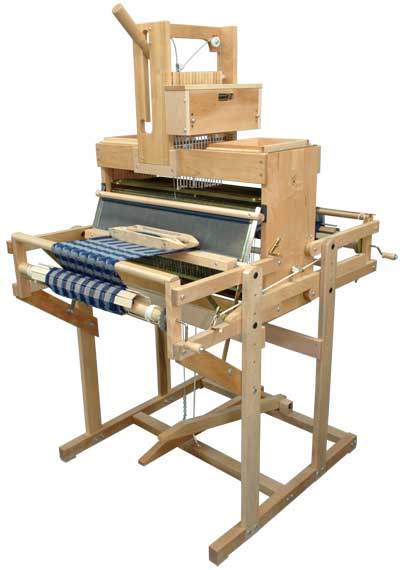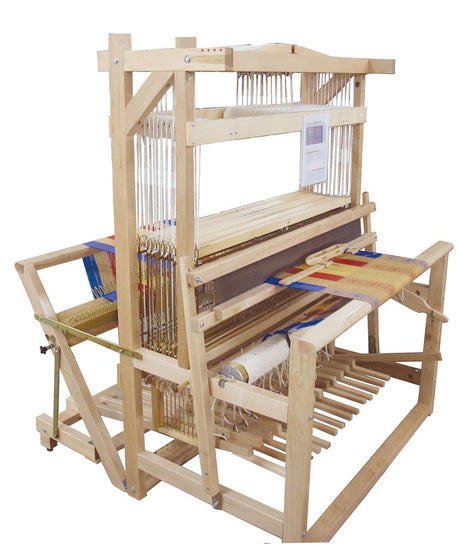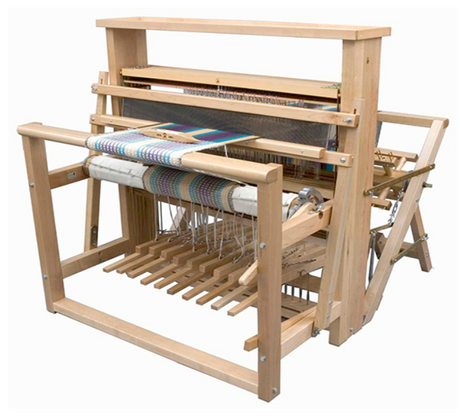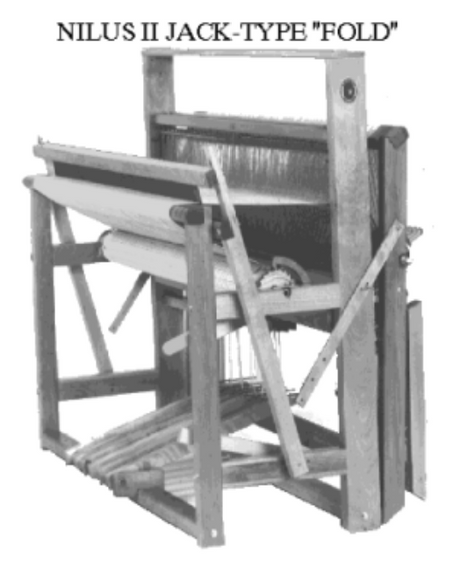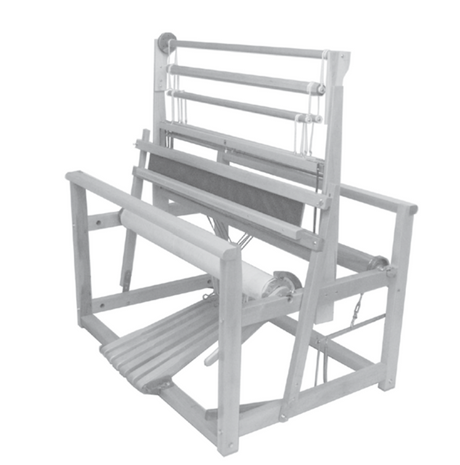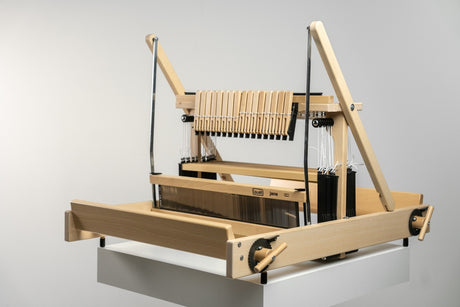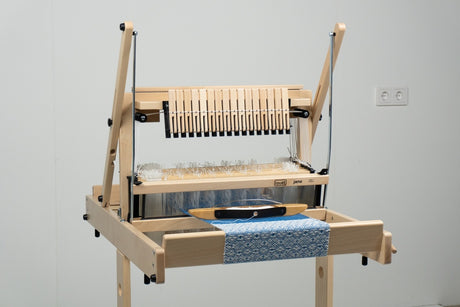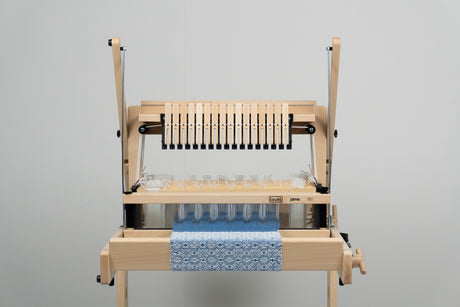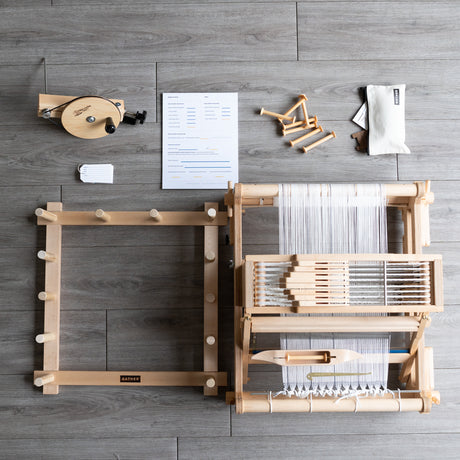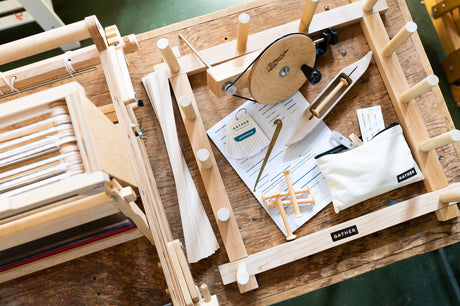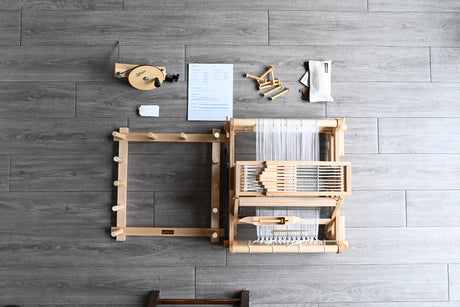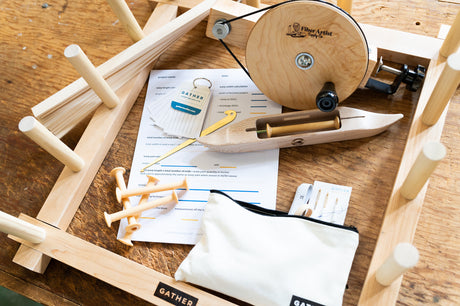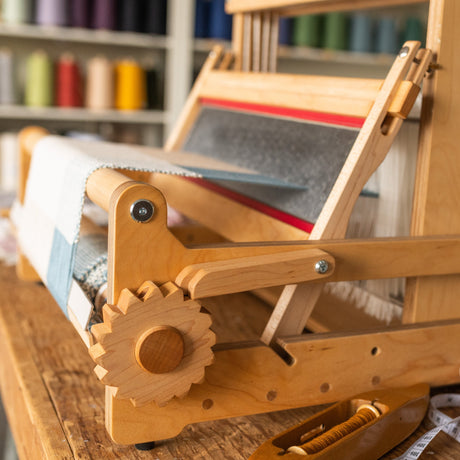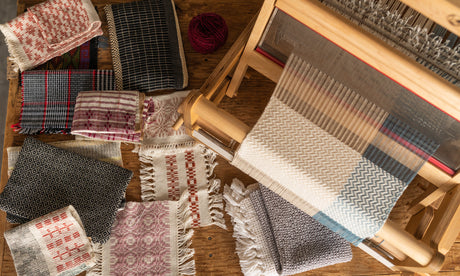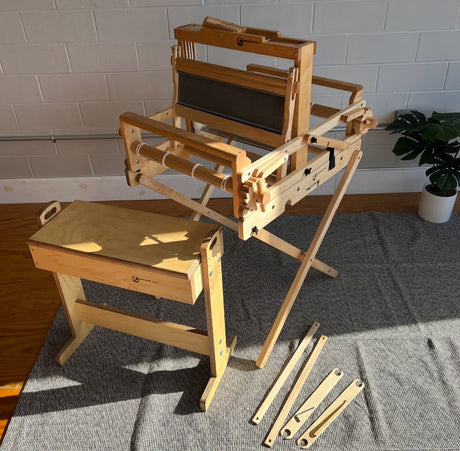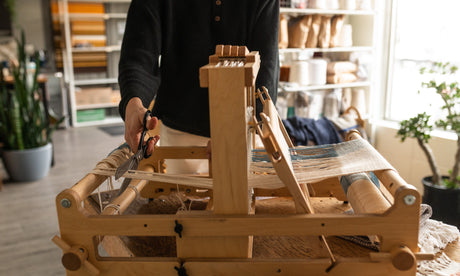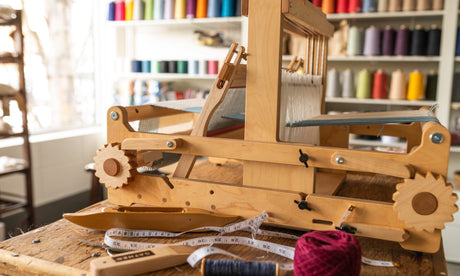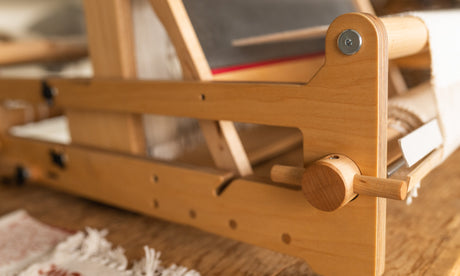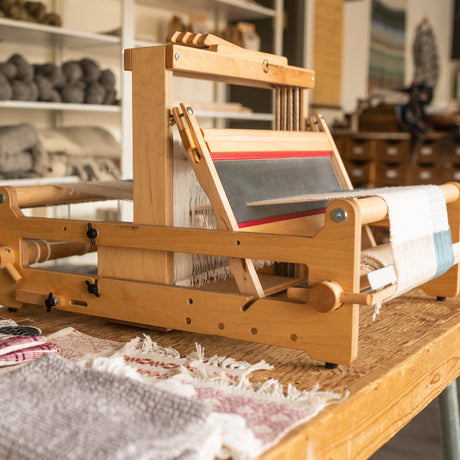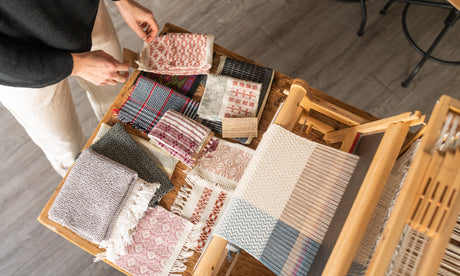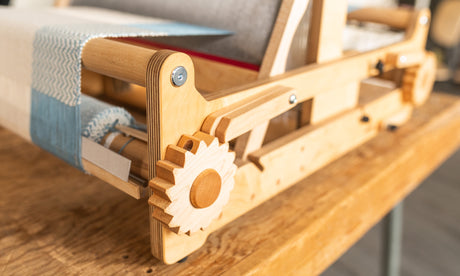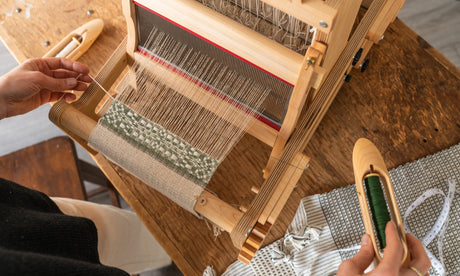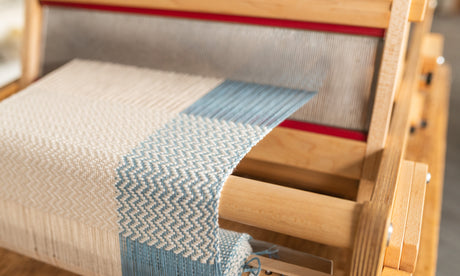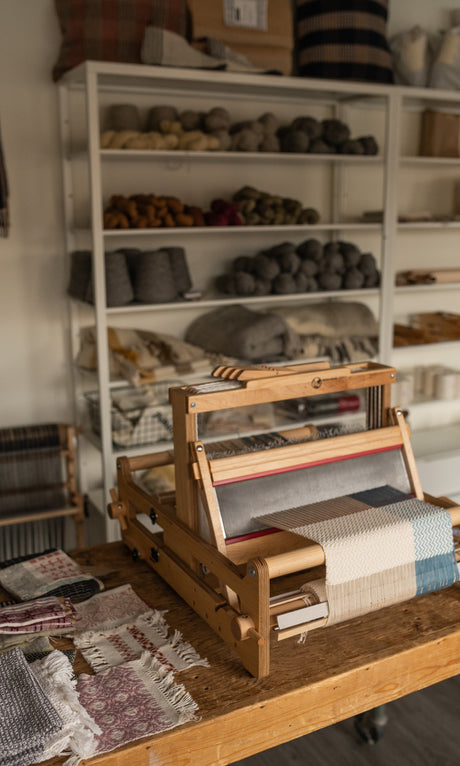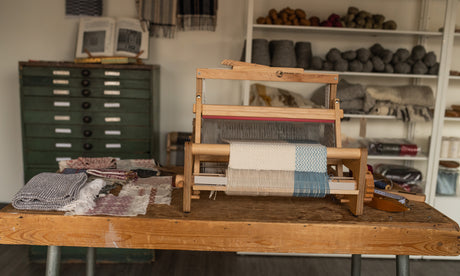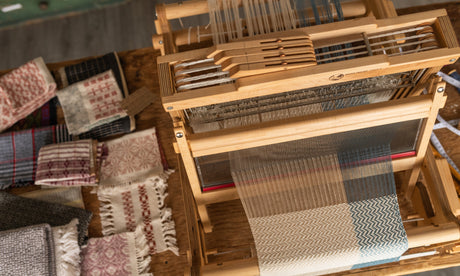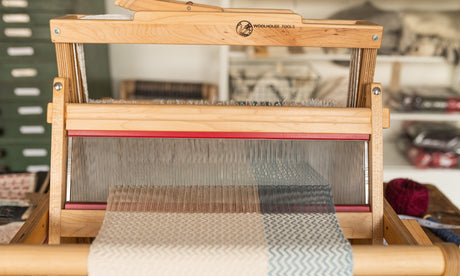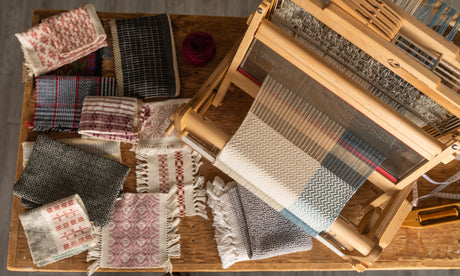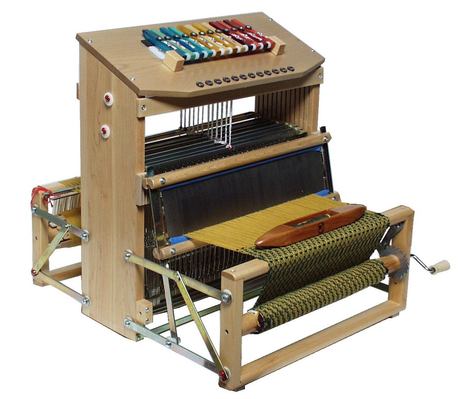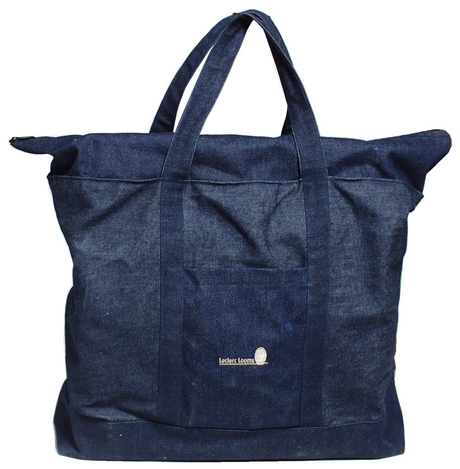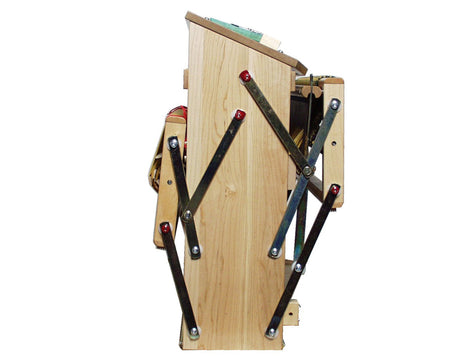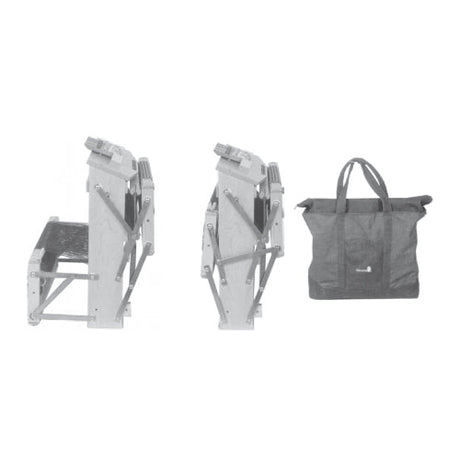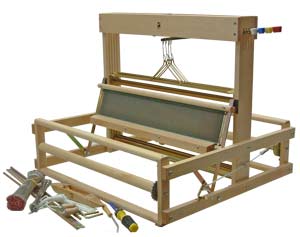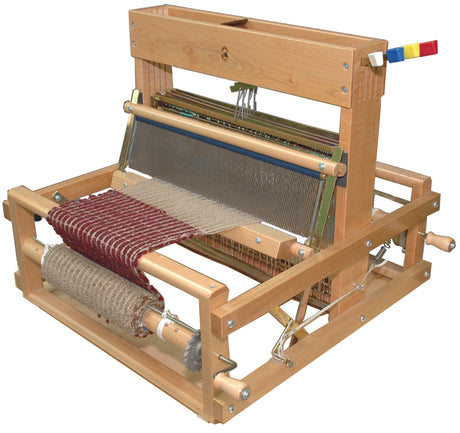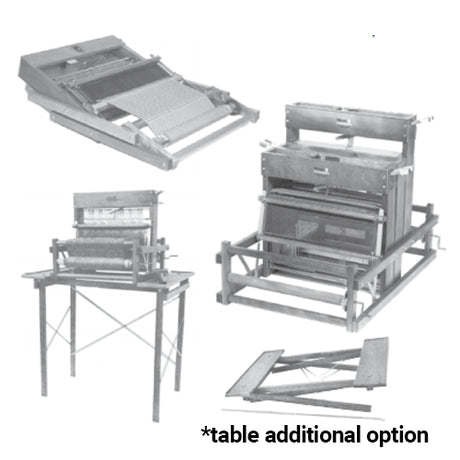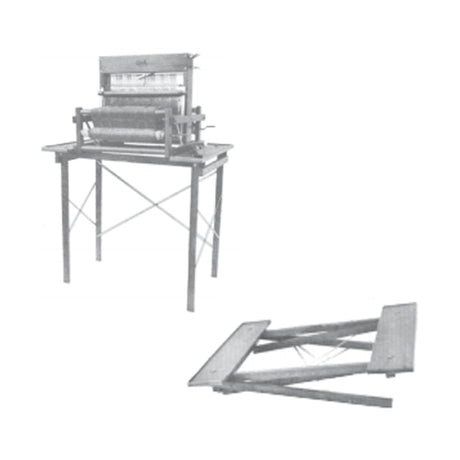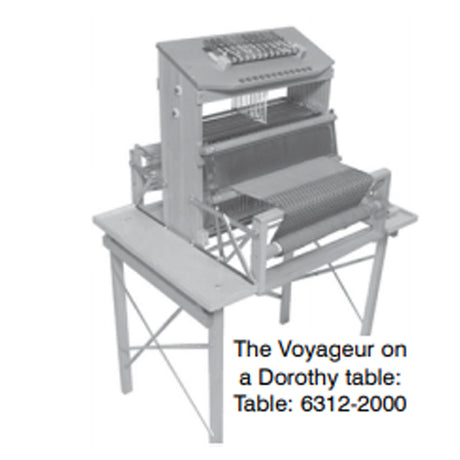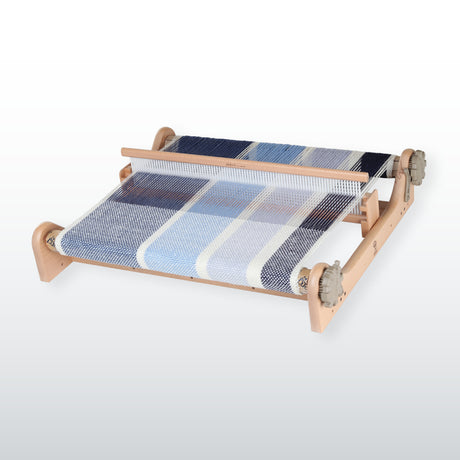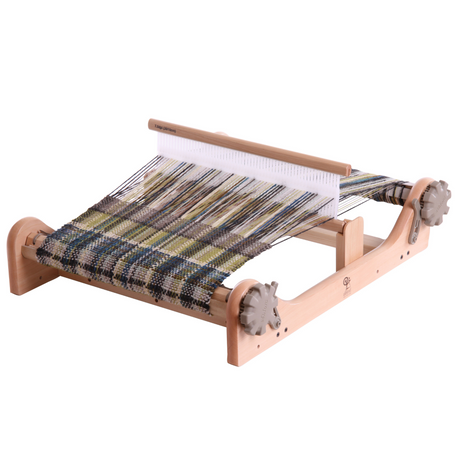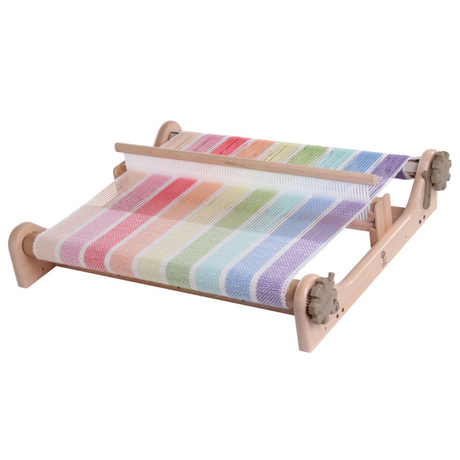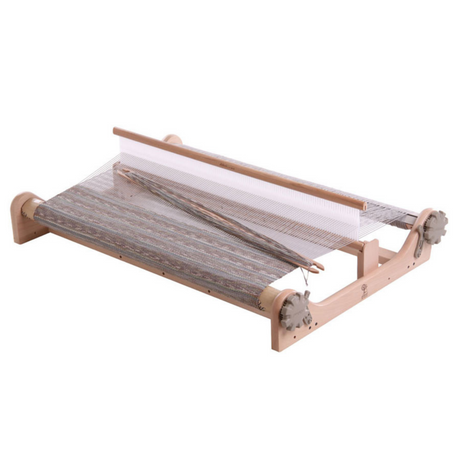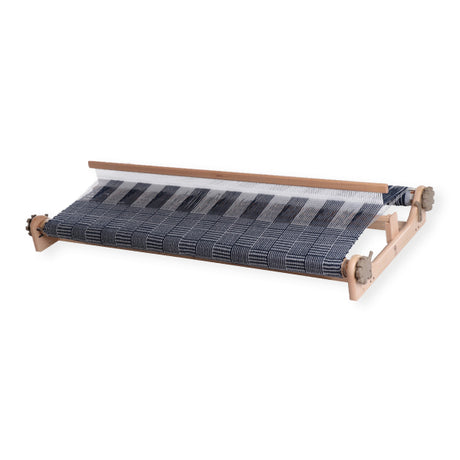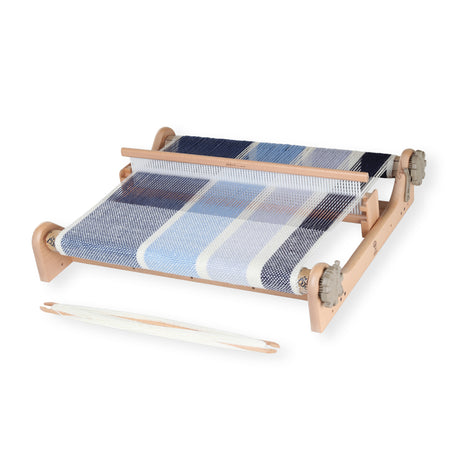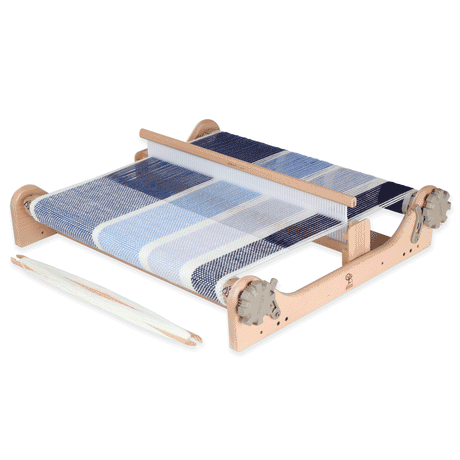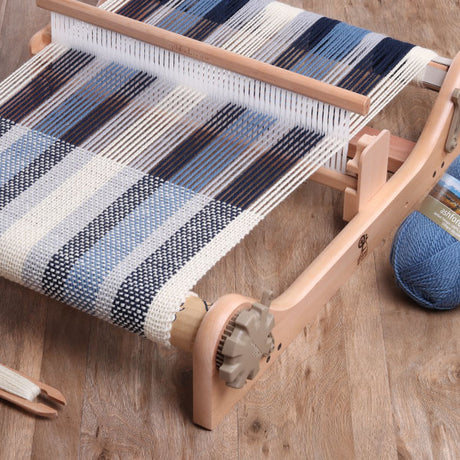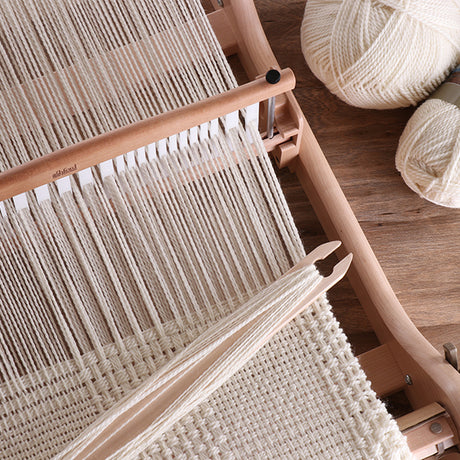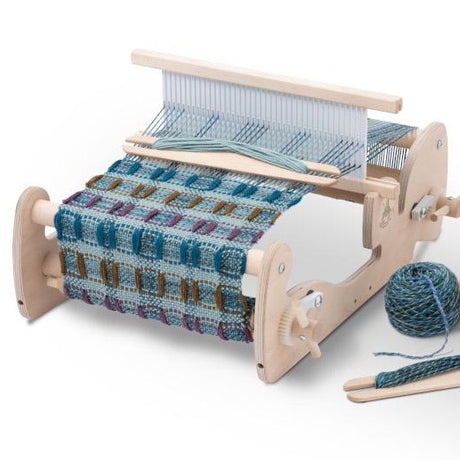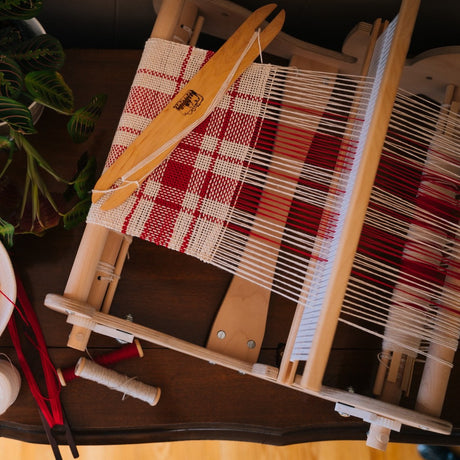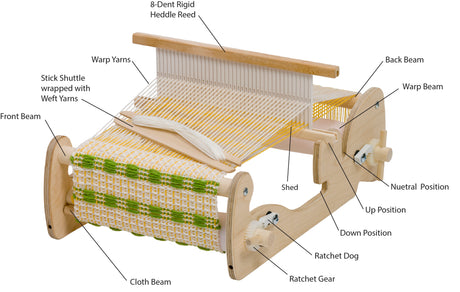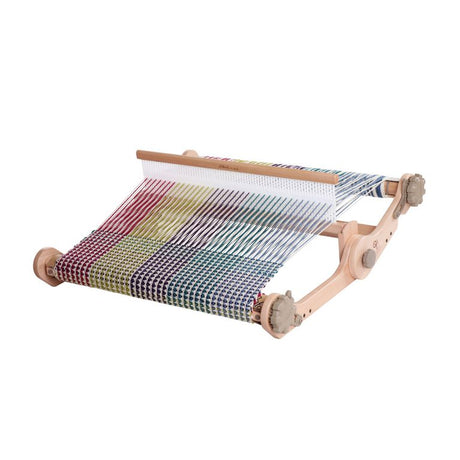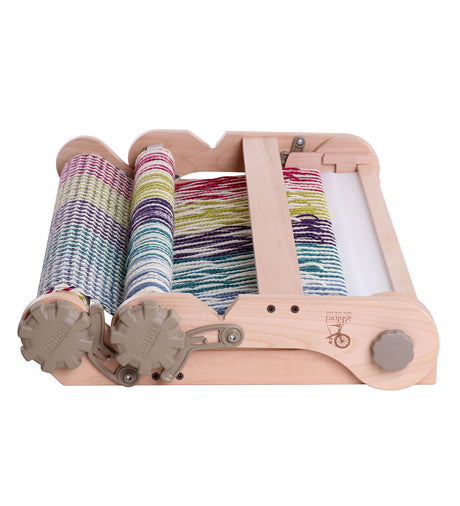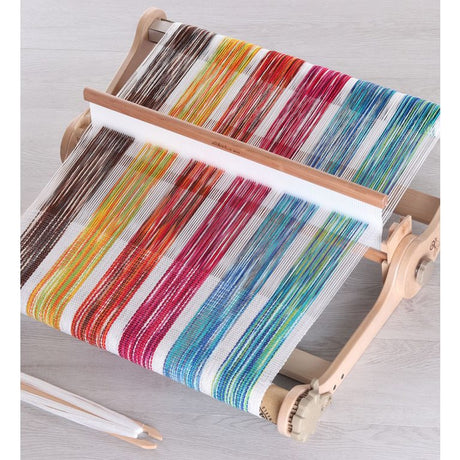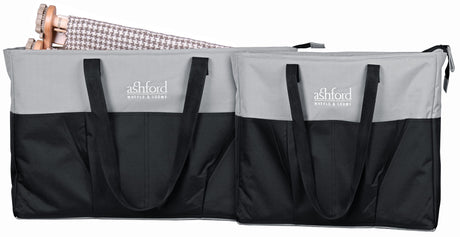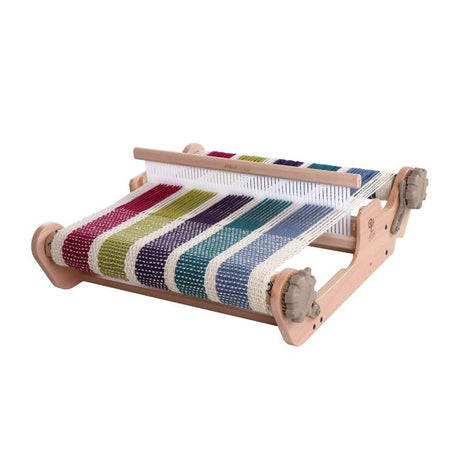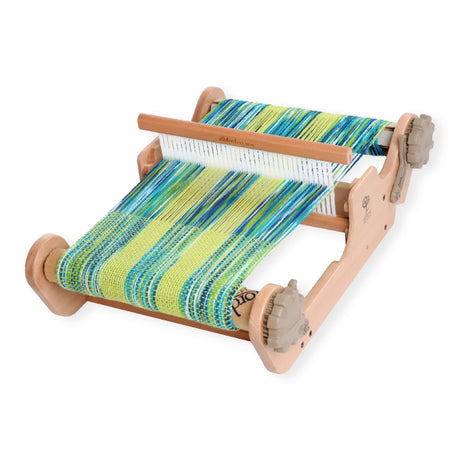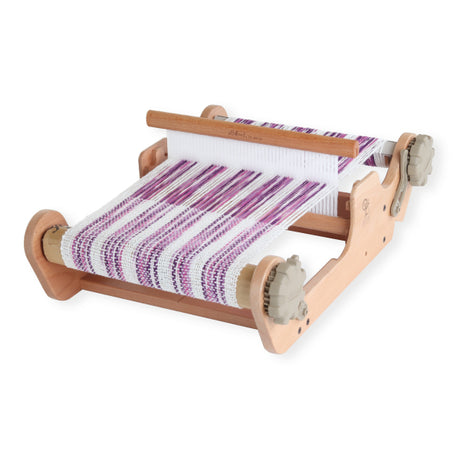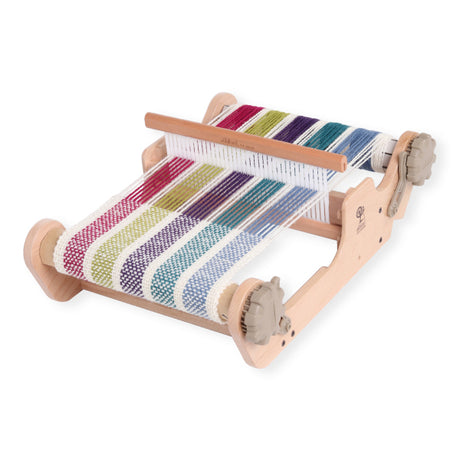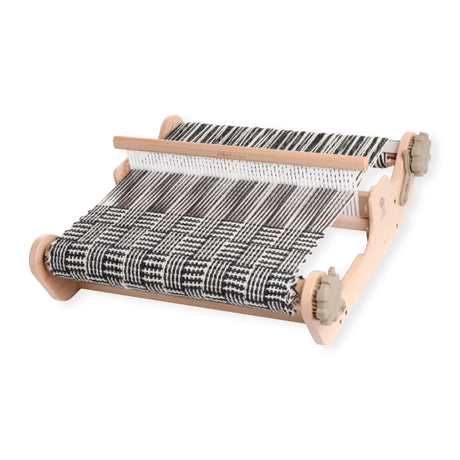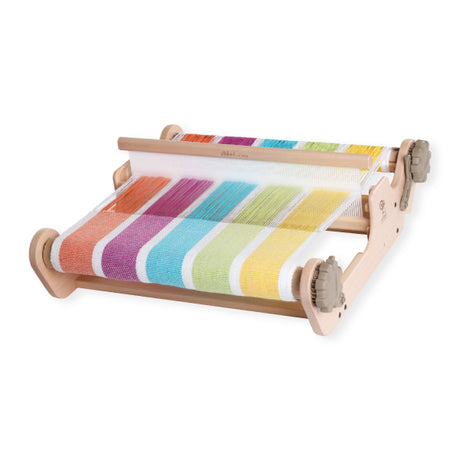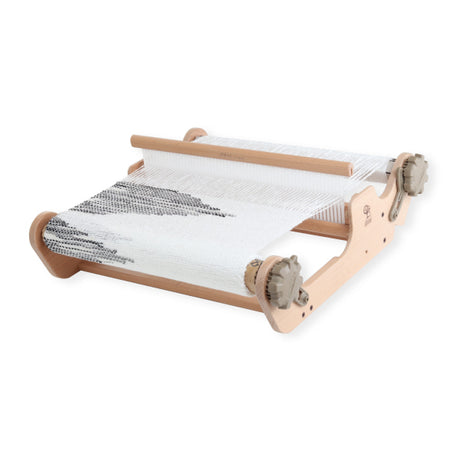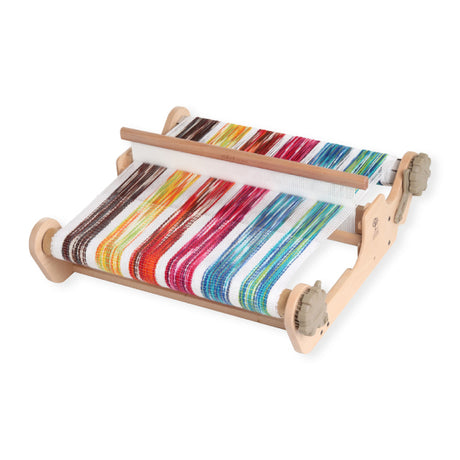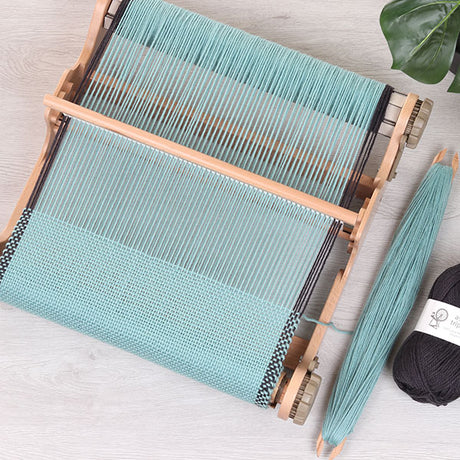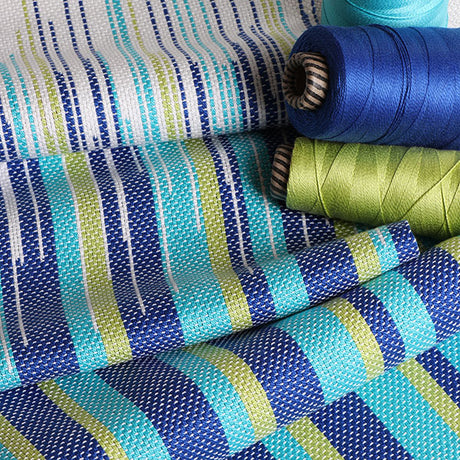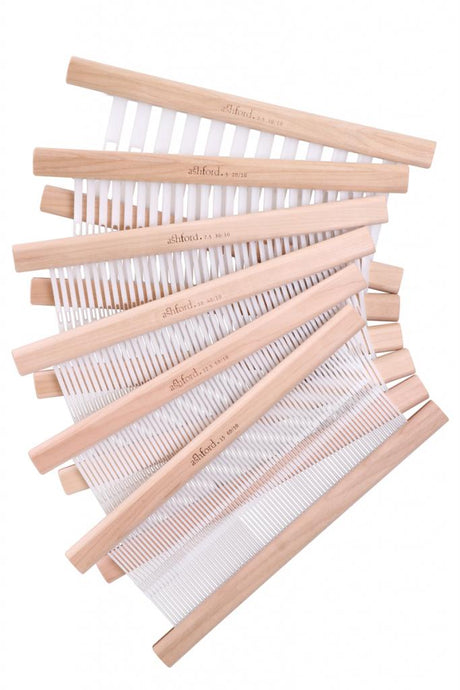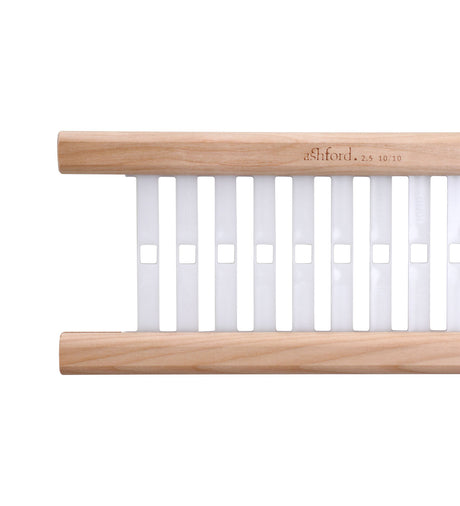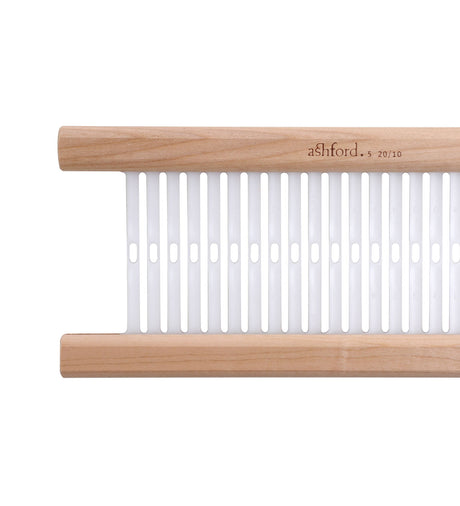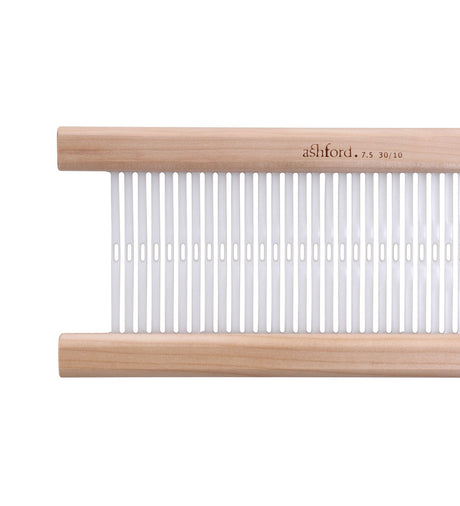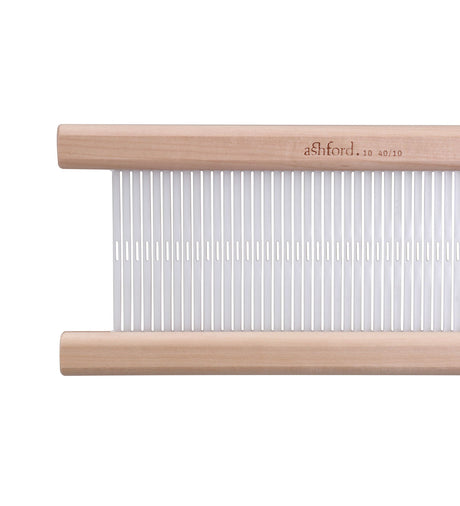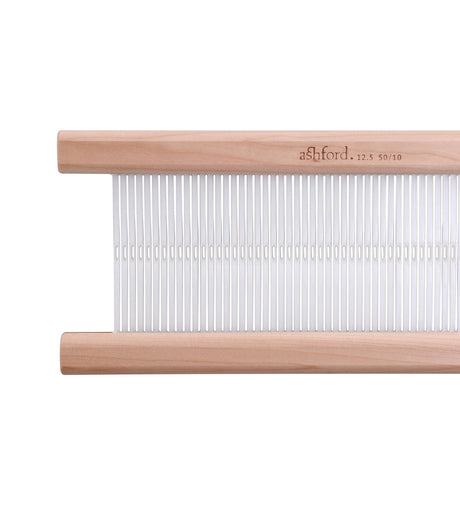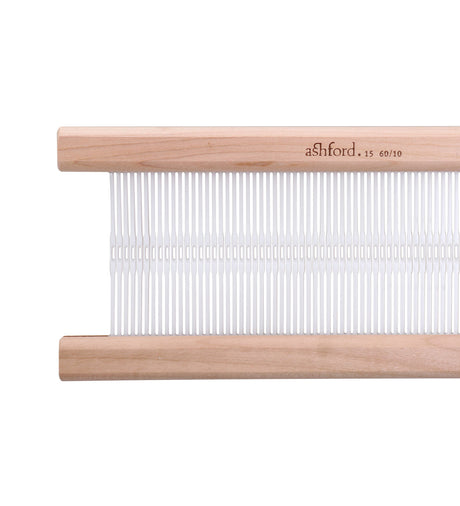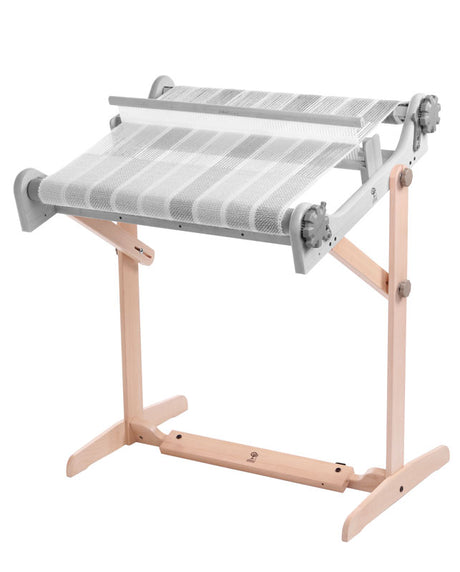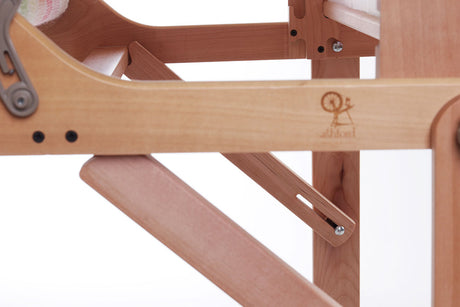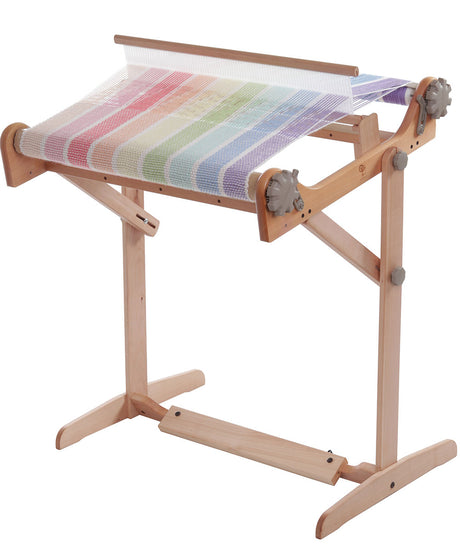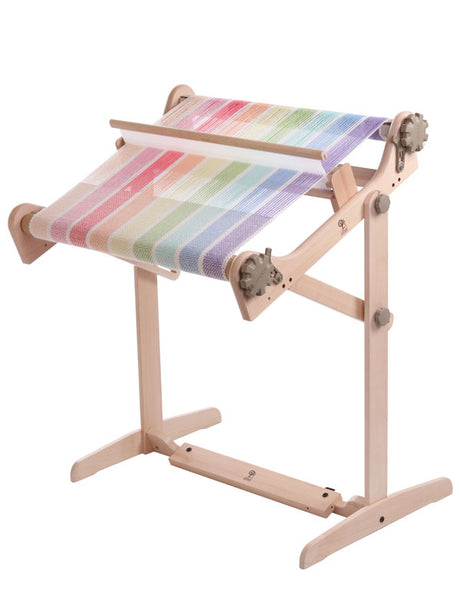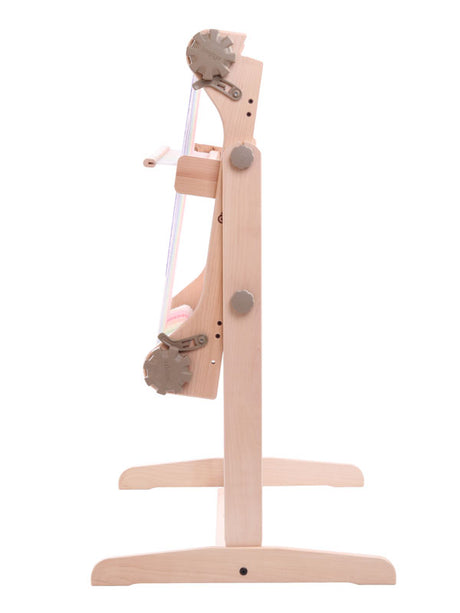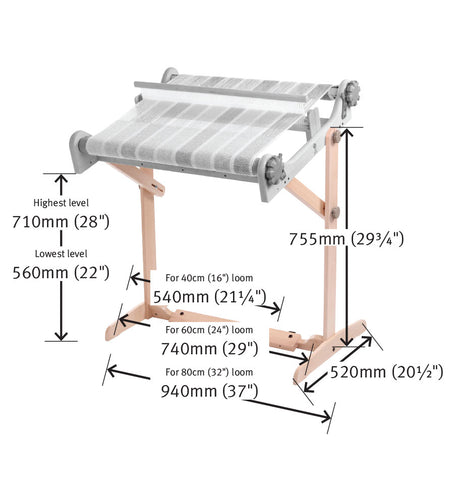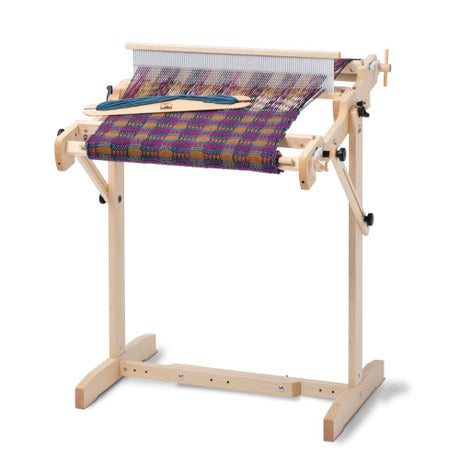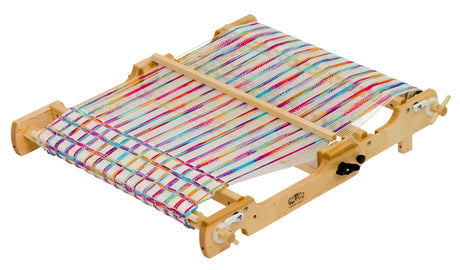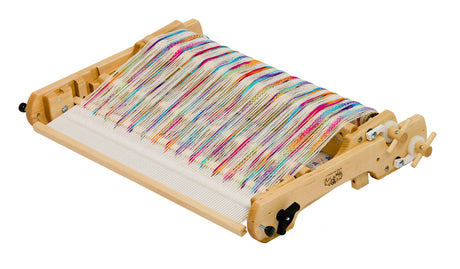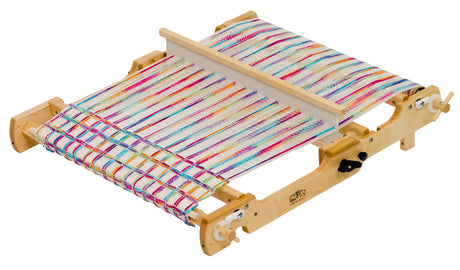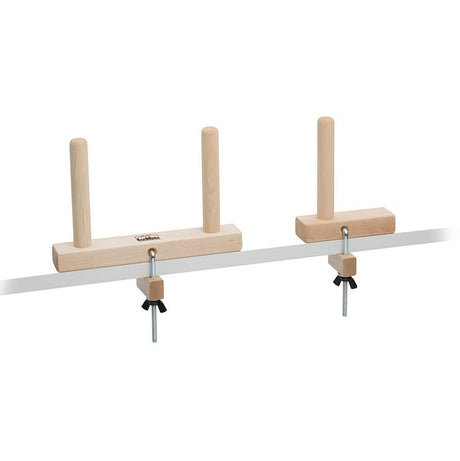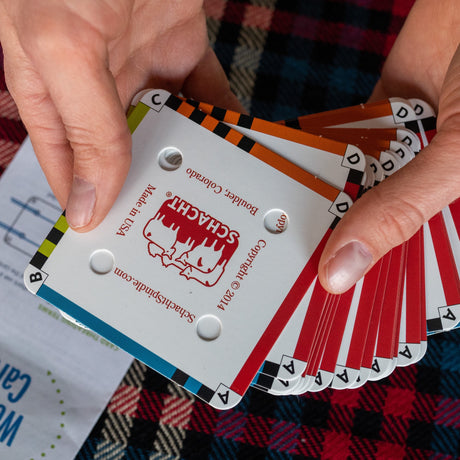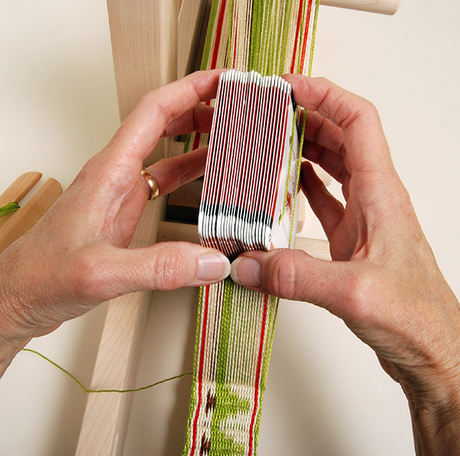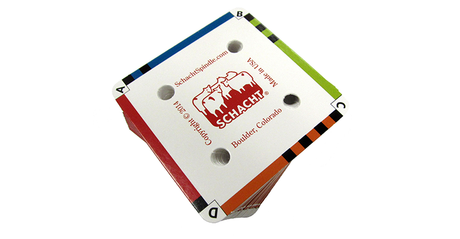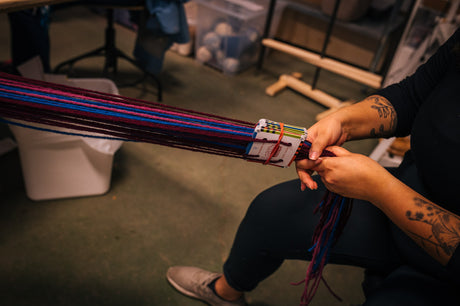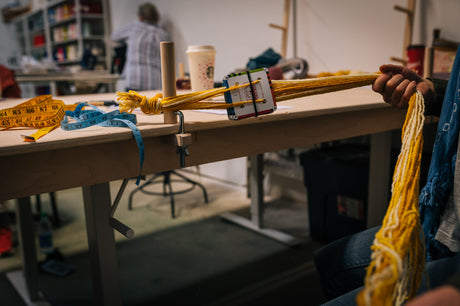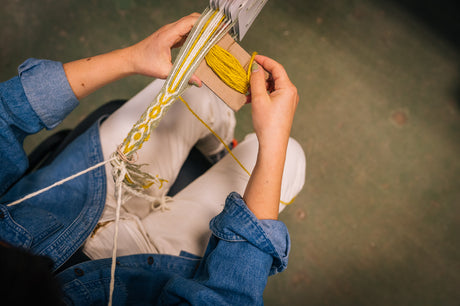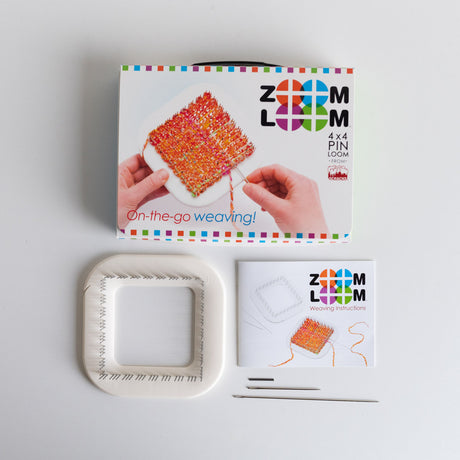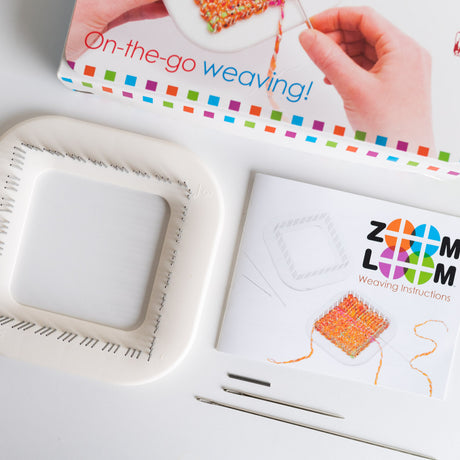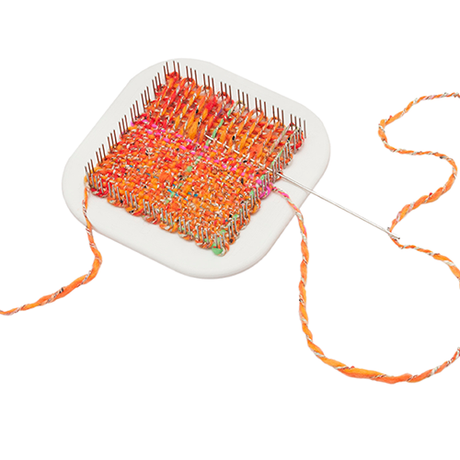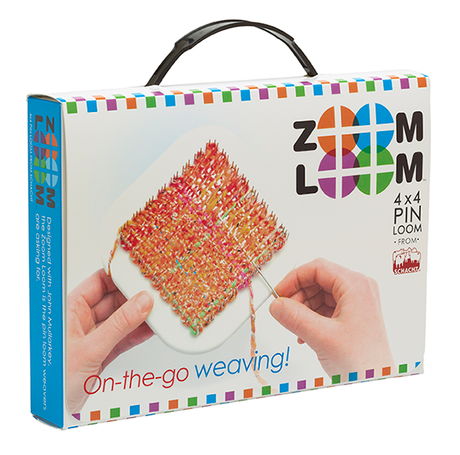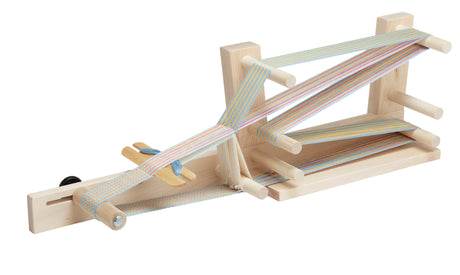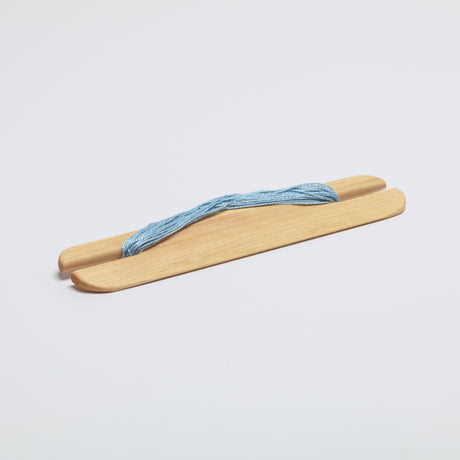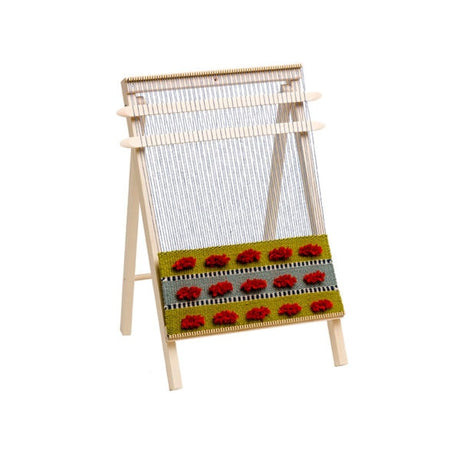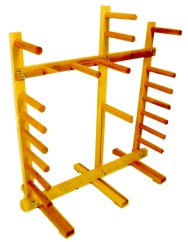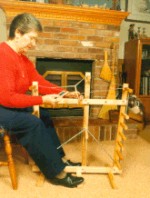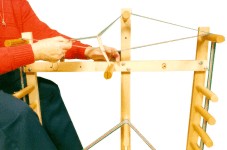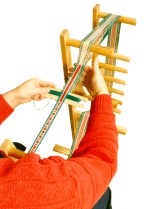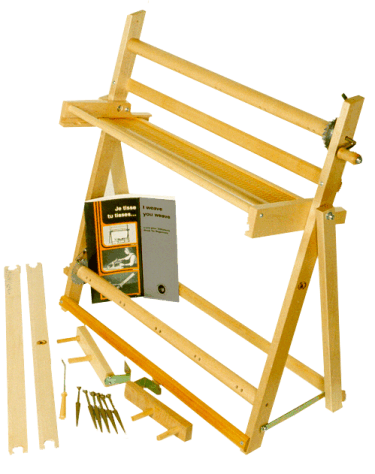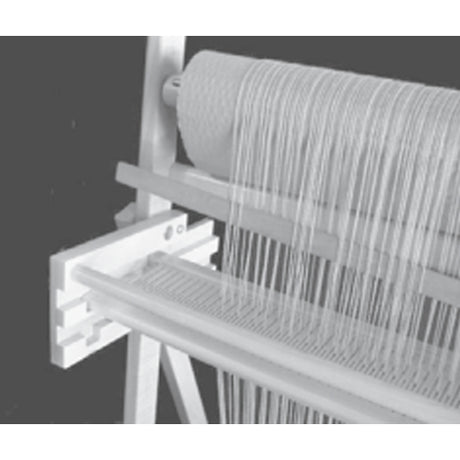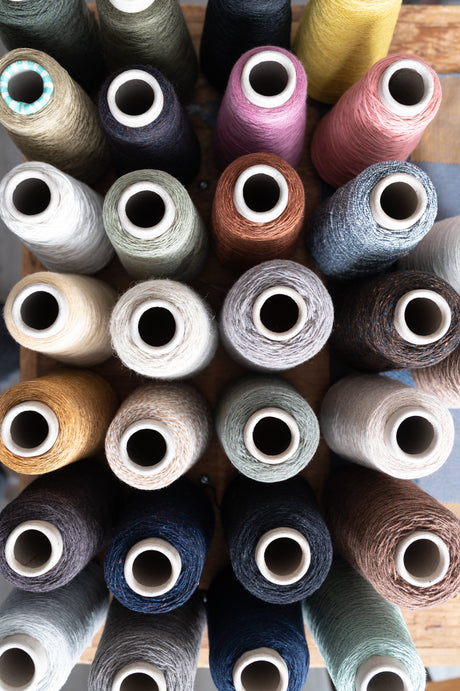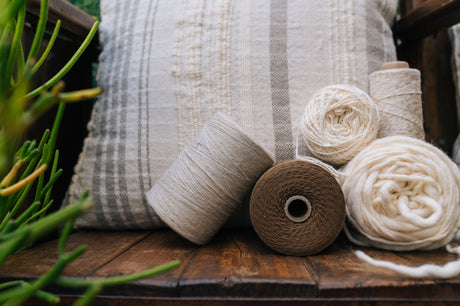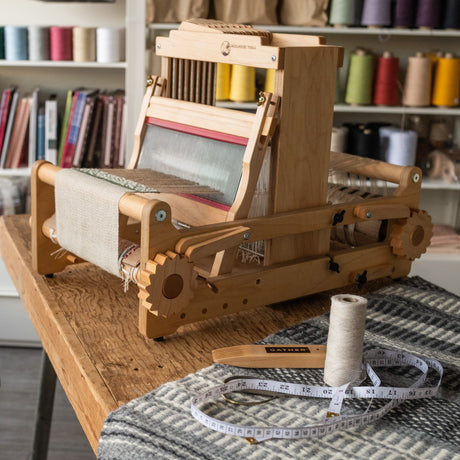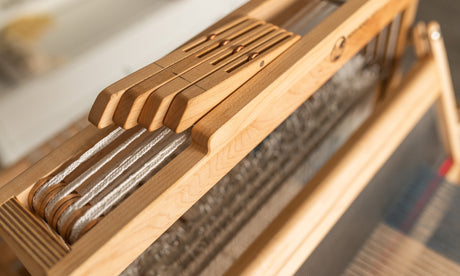Looms are a big part of what makes weaving so much fun.
They are beautiful, often complex, always fascinating pieces of equipment. As you weave, you get to know your loom inside and out: its quirks, its strengths, its construction… But when you’re looking to buy a new loom, things can feel much more uncertain, and more than a little confusing. Here, then, is all the information you need to narrow down which kind of loom is right for you.
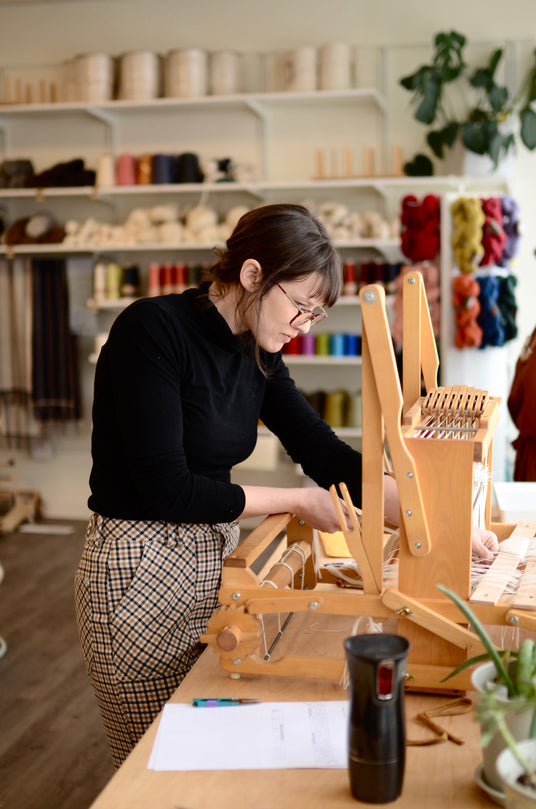
Before we get into the details, it’s best to ask yourself a few big picture questions:
What are your practical constraints? How much space do you have? Looms range from compact 15” widths to 60”+. What do you want to spend? Costs vary as widely as width does, from $250 to $5000 or more. The best loom for you is one that fits your home and your budget.
What do you want to make? You’ll need a loom at least a little bit wider than the fabric you want to weave. A small loom is great for scarves, but you’ll want at least 20” for tea towels, 30+” for shawls or baby wraps, and as wide as possible for blankets or yardage.
What are your creative goals?
Do you usually end up itching to do the most complex possible version of a craft? If you know you’ll shoot for the stars, you might want as many shafts as possible on a loom you can grow into. Or would you rather enjoy weaving quick and satisfying pieces? A simpler loom like a rigid heddle loom can give a lot of joy.
Now that you’ve thought a bit about what kind of weaving you want to do, take a deeper dive into one or more of the sections below covering three common styles of looms. Rigid Heddle looms are small, quick, and fun. Table looms give maximum pattern complexity in minimum space. Floor looms let you take on projects of ambitious size and intricacy.
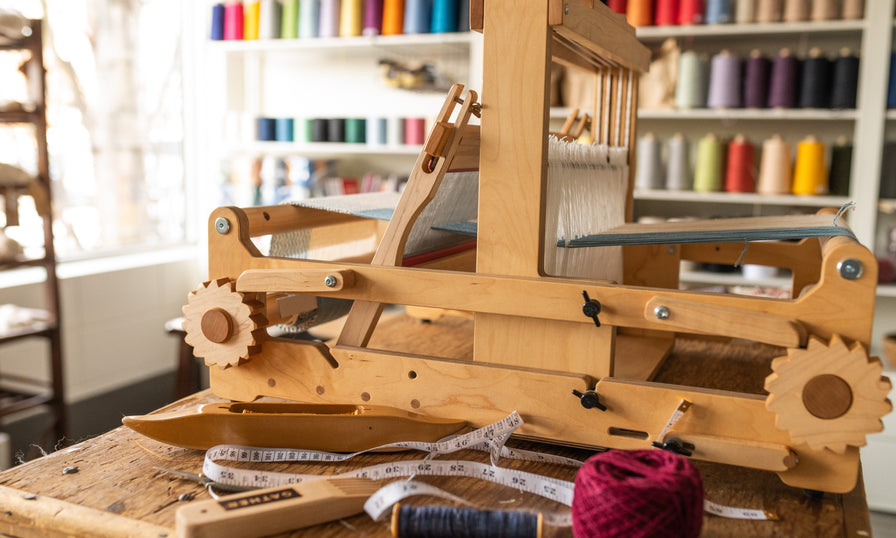
Types of Looms
Floor Looms
If you have the space, the budget, and the ambition, it's worth it to get a floor loom.
There’s a reason why these looms are treated as the gold standard weaving loom. They are incredibly flexible, producing both simple and highly complex patterns. They are efficient, allowing you to make multiple items on a single warp. They are fast to weave on, dividing the labour of weaving between your hands and your feet. And they are incredibly enjoyable to use. Floor loom weaving is what often comes to beginners’ minds when they picture weaving--the rhythm of shafts rising and falling, a shuttle flying back and forth, and a long roll of finished work slowly building up around the cloth beam.
Floor looms are usually about the size of a piano. Weaving widths ranges from 18-60 inches, with 26-45 inch widths being the most popular. They take up a large footprint in your home, but their size comes with many benefits. You can weave cloth with greater width. You can also weave very long warps. While rigid heddle looms top out around five yards of length, floor looms can hold massive warps ups to 50 yards long. Don’t worry, though! You can still weave a short warp or make a scarf-width piece on a floor loom. But if you end up wanting to push your limits, the option is there. A floor loom can carry you through your entire weaving life, no matter where you end up wanting to take your weaving.
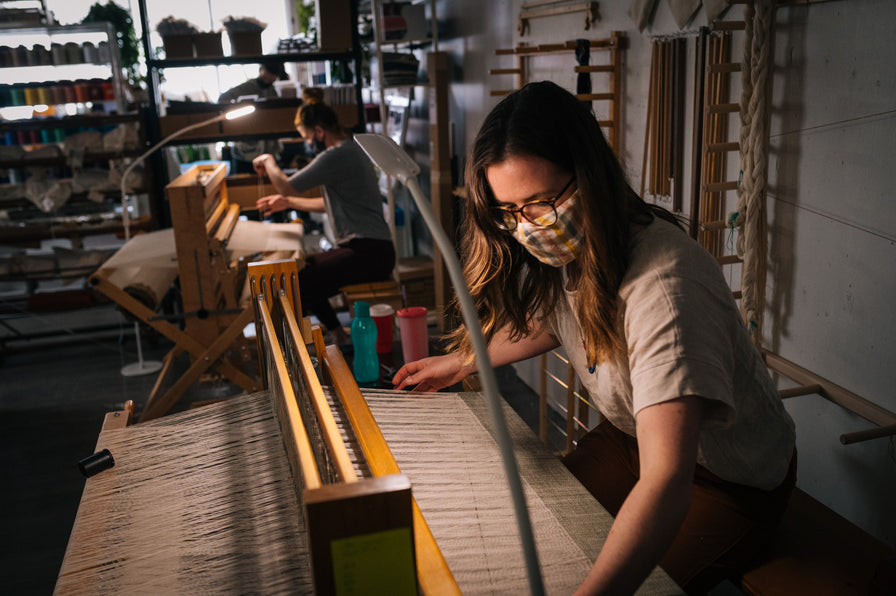
Of course, all this potential comes with trade offs.
Setting up a warp on a floor loom (“dressing the loom”) is a slow process. Dressing a rigid heddle loom takes a couple of hours; winding a warp and dressing a floor loom is likely to take more like 6-8 hours. Floor looms also produce a substantial amount of loom waste, with 24+ inches of the warp being cut off as waste on each project. Making multiple pieces on the same warp minimizes the waste per piece.
Floor looms require physical mobility and strength to operate and maintain. I am often down on the ground next to my floor loom to adjust the tie ups or repair the brake. I also end up shoving it around the room a fair bit to get clear access to different parts of the loom for beaming, threading, etc. Weavers with limited strength in their hands or legs, or with limited ability to get up and down may need occasional assistance setting up a warp.
One of the most fun parts of having such a large and complex tool is really getting to know your loom. Floor looms are made of solid wood with intricate metal mechanisms. Over the years, you will end up learning your loom’s quirks, doing minor repairs, and discovering all of its strengths and possibilities. It’s no wonder that many weavers end up naming their looms.
Shop Floor Looms
View allTable Looms
Table looms are just as capable as floor looms of producing gorgeous, complex weave structures.
Twills, overshot, double weave, shadow weave, you name it, you can weave it on a table loom. Table looms are also very portable, making them excellent looms for bringing to workshops or travelling with. With a table loom, you can weave on your back porch or on vacation. You can also easily lend your loom out to a friend to get them hooked and turn them into your weaving buddy!
Because table looms pack the capacity for complex weaving into a small package, they are beautiful and often intricately designed small looms. Louet looms have elegant lines and artful details. Schacht’s table loom has a more rustic look, but is engineered for clean, accurate weaving. With a table loom, the entire weaving process is in view while you work. This can be mesmerizing.
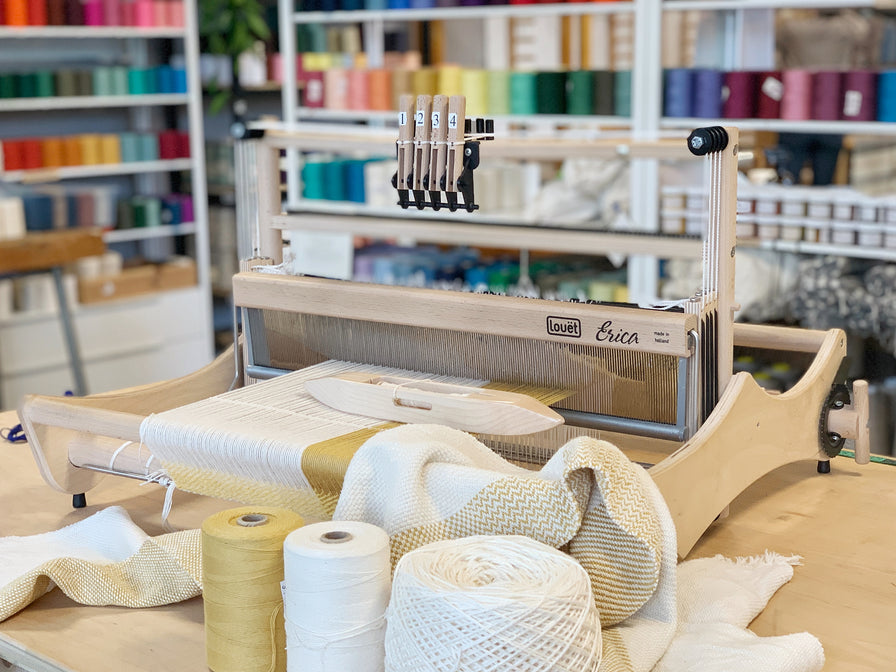
The only downside to table looms compared to floor looms is speed.
On a floor loom, labour is divided between your hands and your feet. With a table loom, you are doing everything with your hands. This slows down the pace of weaving, and can make it harder to get into a good rhythm. That said, if you have limited mobility or joint issues in your legs, doing everything with your hands can be a real positive.
In terms of warp lengths, table looms are in the middle of the range. Table looms allow you to make longer warps than a rigid heddle loom, but not as long as a floor loom. You can make a single project at a time, or you can absolutely set up a single warp that will give you several dish towels or a handful of table runners.
Table looms hit a sweet spot between size and complexity. They let you explore a range of techniques while only taking up a small footprint.
Shop Table Looms
View allRigid Heddle Looms
For some people, their rigid heddle is their forever loom.
For others, it’s a first step down the path to larger and more complex looms. Whatever the case, these little looms can provide hours upon hours of happy weaving.
Rigid heddle looms are small, simple, and satisfying. They combine three different mechanisms from multi-shaft looms (the reed, the beater, and the heddles) into one piece (the rigid heddle reed). This makes weaving on a rigid heddle loom easy to learn. It also means rigid heddle looms are (relatively) fast and simple to put a new warp on. You can measure, wind on, and thread a new warp in a couple of hours, compared to the often multi-day set up of floor looms. Once you’re up and weaving, the pace slows down. Lifting and lowering the rigid heddle reed is slower than pressing a treadle (foot pedal) on a floor loom, and the stick shuttles that rigid heddle weavers commonly use aren’t as speedy to weave with as a boat shuttle. That said, this only means that you get to spend more time on the actual weaving part of weaving, AKA the fun part!
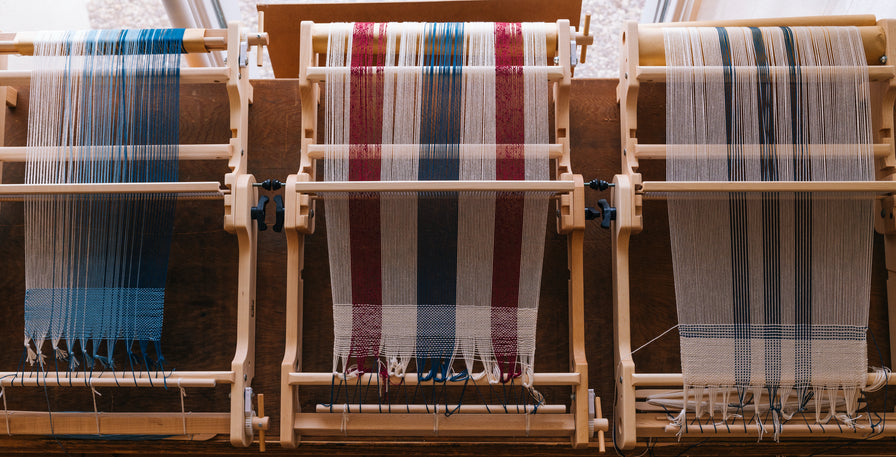
Weavers usually make short warps on rigid heddle looms, setting up to make a single scarf or a couple of tea towels at a time.
Short, simple projects are the sweet spot for these looms. Rigid heddle looms are designed to produce plain weave, which is the simplest weave structure. There are plenty of ways to add interest to your plain weave pieces, from playing with different fibres to adding texture using pick up sticks. But while it is technically possible to branch out into twill and doubleweave on a rigid heddle loom, doing so is cumbersome and extremely time consuming. Many weavers find using the loom for its intended purpose--plain weave with some embellishment--to be more enjoyable.
Rigid heddle looms are sometimes called “Knitters’ Looms” for their popularity with knitting enthusiasts. There’s a good reason for this: rigid heddle looms are great for stash-busting a hoard of knitting yarn. Rigid heddle looms waste very little yarn compared to other looms. With a floor loom, you may end up throwing out 24 inches of warp as loom waste. With a rigid heddle loom, loom waste can be 8 inches, or even less. That frees you up to use fancy fibres in your warp without worrying that you will be throwing too much of it in the garbage.
These are also some of the most easily portable looms around. Some, like the Flip, also fold for easy storage. If you’re dreaming of weaving on your deck, or taking your hobby on a road trip with you, a rigid heddle loom can get you there. If you’re staying closer to home and don’t want to take up too much space in an apartment or in an already-crowded craft room, these looms are easy to stash when you need the space.
Shop Rigid Heddle Looms
View allTapestry & Small Looms
Tapestry Looms
Small and simple like this frame loom or large and capable of weft-faced two-shaft weaving, tapestry looms are great for weavers of all ages.
Weaving Cards
Card weaving (also known as tablet weaving) is a way to create patterned woven bands that are thick, sturdy and beautiful. The portability of these cards allows you to essentially carry a four-harness loom in your pocket!
Inkle Looms
Inkle looms are great for weaving belts and bands. They’re perfect for start-up weaving programs because they require little additional equipment, are easy to use and understand, and are easily stored.
